
Kamala Devi Harris’s journey through American politics has been one of consistent ascendance, marked by a series of trailblazing achievements. As the first female, first African American, and first Asian American U.S. vice president, she has carved a singular path, moving from a distinguished legal career to the highest echelons of national leadership. Born in Oakland, California, her foundational years at Howard University and the University of California, Hastings College of the Law prepared her for a career dedicated to public service, initially as a deputy district attorney in Alameda County and later in San Francisco.
Her career trajectory saw her elected as San Francisco’s district attorney in 2003, then as California’s attorney general in 2010, and subsequently as a U.S. Senator representing California from 2017 to 2021. Each role brought new opportunities to shape policy and jurisprudence, demonstrating a commitment to justice reform, consumer protection, and civil rights. Throughout these demanding positions, Harris often found herself at the center of complex policy debates and high-stakes political confrontations, developing a reputation for incisive questioning and a firm resolve.
Yet, like any figure operating in the public sphere at such elevated levels, her journey has been punctuated by significant challenges, intense scrutiny, and moments of profound political and personal pressure. These “blows,” as they might be perceived, are integral to understanding the full scope of her impact and the resilience required to navigate the often-turbulent waters of American politics. From contentious policy decisions made as Attorney General to sharp exchanges in Senate hearings and even direct security threats, Harris has faced a series of hurdles that have shaped her public image and political narrative, laying bare the complexities inherent in a career dedicated to public service.

1. **Defense of California’s Death Penalty (2014)**: As San Francisco’s District Attorney, Kamala Harris famously pledged never to seek capital punishment, a promise she upheld. This progressive stance shifted when she became California’s Attorney General. In 2014, her office defended the state’s death penalty in court, a move that drew considerable criticism from death penalty opponents and reform advocates, presenting a significant “blow” to her image among some supporters.
This decision highlighted the inherent tension between a prosecutor’s personal views and the institutional obligations of upholding state law. Her choice to defend the state’s position, rather than actively oppose it, was interpreted by some as a pragmatic concession to political realities, while others saw it as a necessary function of her role as the state’s top attorney. This episode underscored the complex balance required in an elected office responsible for enforcing the full breadth of state statutes.
The backlash from this decision resurfaced during her later presidential campaign, as critics questioned the consistency of her reformist credentials. It became a point of contention that required her to explain the nuances of her dual roles, demonstrating the lasting impact of high-profile legal positions on a politician’s narrative and public perception. This defense of the death penalty was a vivid illustration of the challenges a public servant faces when actions, though legally mandated, clash with segments of their political base.

2. **Criticism over Wrongful Convictions and Prison Labor**: Beyond the death penalty, Kamala Harris’s record as California’s Attorney General faced criticism concerning her office’s stance on cases involving wrongful convictions and its position on prison labor. While her administration launched initiatives like the Division of Recidivism Reduction and Re-Entry, these efforts were often contrasted with other less progressive aspects of her record by critics.
Specifically, her office defended the state’s position in appeals related to wrongful convictions, rather than actively pursuing exonerations or re-examinations. This approach, though legally standard, was seen by some as prioritizing institutional defense over individual justice, particularly given her professed commitment to criminal justice reform. Similarly, her office’s stance on prison labor, by not actively challenging or dismantling these controversial practices, drew fire from activists who viewed it as exploitative and unjust.
These issues highlighted the formidable challenges Harris faced in navigating California’s complex legal system. Her decisions, whether perceived as pragmatic or principled, illustrate the intense scrutiny that accompanies high-level legal positions, where every action is interpreted through multiple political and ethical lenses. These criticisms constituted “blows” to her image as a steadfast reformer, underscoring the difficulty of implementing sweeping changes while managing the vast machinery of state law enforcement.

3. **Heated Questioning in Senate Hearings (Rosenstein/Sessions)**: Upon entering the U.S. Senate, Kamala Harris quickly established a national profile through her incisive questioning during high-stakes committee hearings, notably involving Trump administration officials. These interrogations, while admired by some, also brought sharp criticism, demonstrating her willingness to engage in direct confrontations for accountability.
In June 2017, Harris gained media attention for her rigorous questioning of Deputy Attorney General Rod Rosenstein about the firing of FBI Director James Comey. Her prosecutorial style led to an unusual interruption by Senators John McCain and Richard Burr, who requested she be more respectful. A week later, she applied similar pressure to Attorney General Jeff Sessions, who famously remarked her questioning “makes me nervous.” Chairman Burr again singled out Harris, sparking media suggestions of sexism.
These confrontations, while showcasing Harris’s legal acumen and tenacity, were also “blows” as they placed her at the center of political firestorms and drew accusations of grandstanding. They solidified her image as a formidable interrogator, a trait that became both a strength and a point of contention as her national profile grew, defining her Senate tenure and highlighting the contentious nature of partisan oversight.
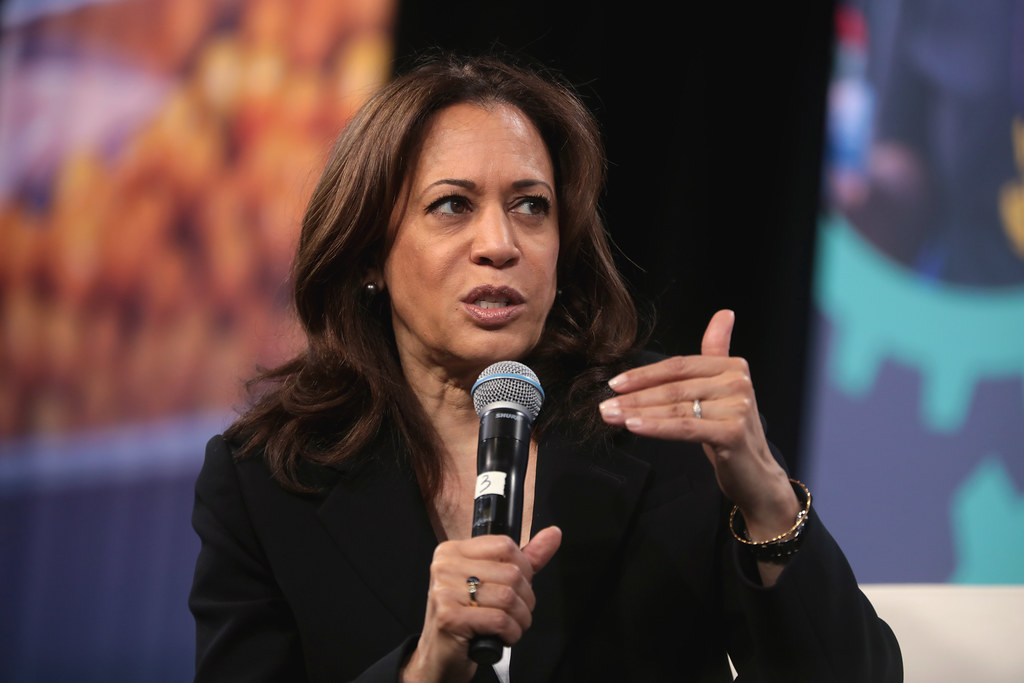
4. **Demand for Kirstjen Nielsen’s Resignation**: The Trump administration’s “family separation policy” at the U.S.-Mexico border in 2018 drew widespread condemnation, with Senator Kamala Harris emerging as a vocal critic. She engaged in heated exchanges with Homeland Security Secretary Kirstjen Nielsen and ultimately demanded her resignation, a significant political “blow” to the administration and a bold move for a senator.
In May 2018, Harris intensely questioned Secretary Nielsen during a Senate hearing about the policy, pressing her on its humanitarian implications and legal justifications. Her sharp and unrelenting questioning reflected widespread outrage over the separation of families, challenging the administration’s narrative and exposing what she viewed as its moral failings.
Following a visit to a detention facility, Senator Harris escalated her criticism in June, becoming the first senator to publicly demand Nielsen’s resignation. This direct call for a cabinet secretary’s removal was a powerful statement, signaling her profound disapproval and conviction that those responsible should be held accountable. This confrontation solidified her standing among progressives and positioned her as a leading voice against the Trump administration’s immigration agenda.
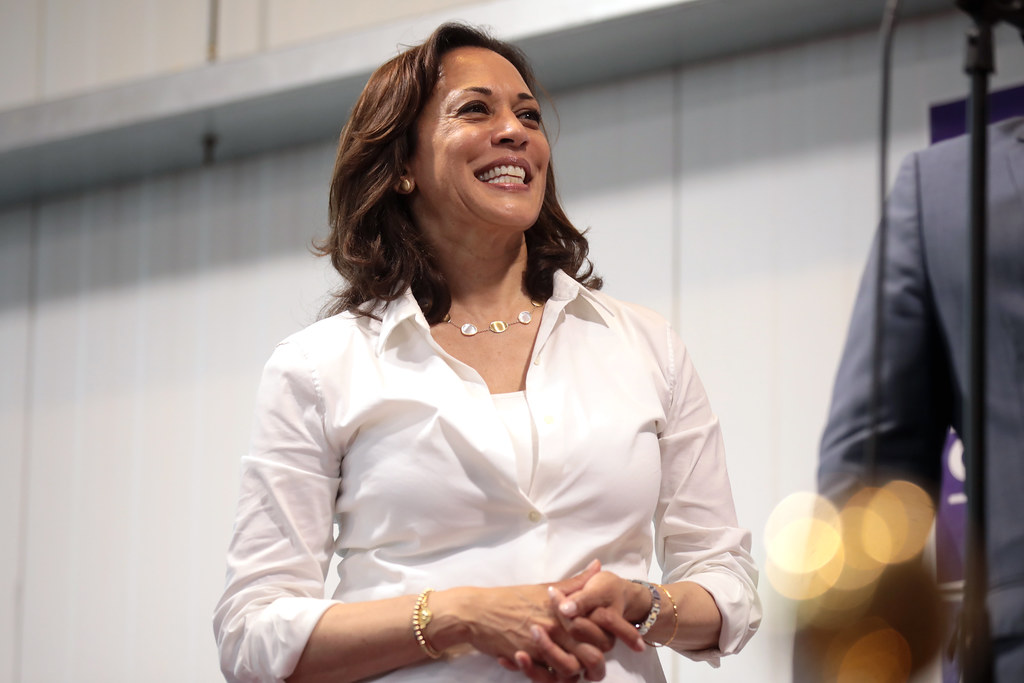
5. **Brett Kavanaugh Confirmation Hearings (Questioning and Opposition)**: The 2018 Supreme Court confirmation hearings for Brett Kavanaugh were deeply polarizing, and Senator Kamala Harris played a prominent role through her pointed questioning and ultimate opposition to his confirmation. Her involvement contributed to the highly charged atmosphere, marking another significant political “blow” in her Senate career.
During the hearings, Harris engaged in a memorable exchange with Kavanaugh, pressing him on a potential meeting regarding the Mueller Investigation. Kavanaugh’s inability to provide a direct answer and his repeated deflections drew considerable media attention. Harris also actively participated in the broader debate concerning the FBI’s limited scope of investigation into Kavanaugh, particularly regarding allegations of sexual assault, expressing strong reservations about the inquiry’s thoroughness.
Ultimately, Harris voted against Kavanaugh’s confirmation, aligning with other Democratic senators who expressed deep concerns about his judicial philosophy and temperament. Her prominent role in these contentious hearings solidified her image as a leading progressive voice and a formidable opponent in judicial battles, though it also drew the ire of conservatives, defining a moment where Harris stood firmly on one side of a deeply divided nation.
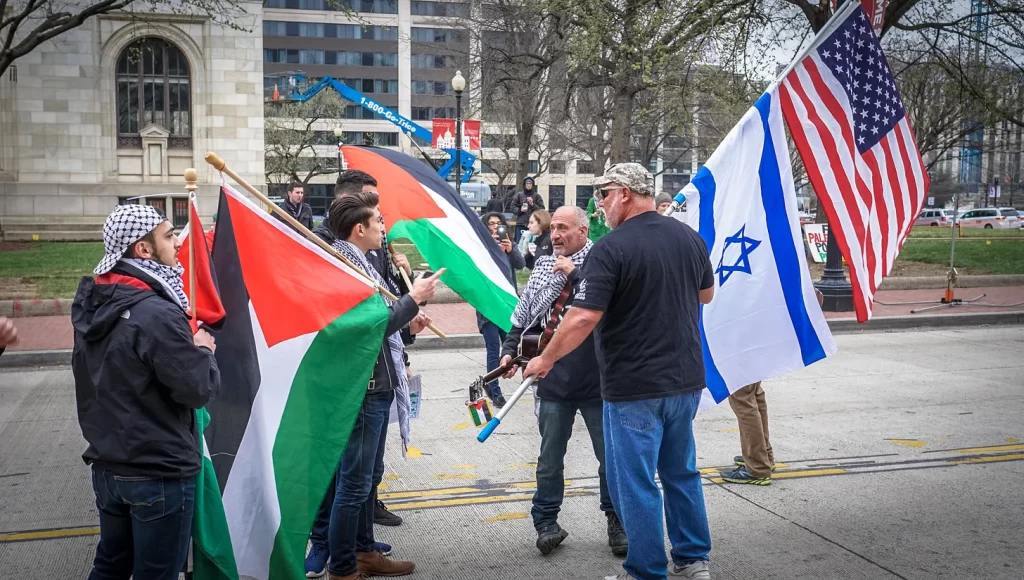
6. **Target of Mail Bombing Attempts (October 2018)**: In October 2018, Kamala Harris was among several prominent Democratic figures targeted by mail bombing attempts, an incident that starkly underscored the heightened political tensions in the United States. This represented a direct threat to her personal security, serving as a grave and literal “blow” to her safety and sense of security as a public official.
The series of pipe bomb packages sent to high-profile individuals revealed a disturbing escalation of politically motivated violence. Harris being a direct target immediately placed her in a perilous situation, necessitating a swift and robust response from law enforcement. While the context does not detail the specific impact on her “security detail,” such an event inherently places immense pressure on protective services and necessitates heightened vigilance.
This incident was not a political setback in the traditional sense, but a severe and alarming “blow” to the physical security of a U.S. Senator. It brought into sharp focus the extreme and dangerous rhetoric permeating political discourse, demonstrating how ideological divisions could manifest in violent actions. For Harris, it was a visceral reminder of the risks associated with her high-profile position.
Image
Drag and drop an image, upload, or choose from your library.
Drop files to uploadUploadMedia LibraryInsert from URL
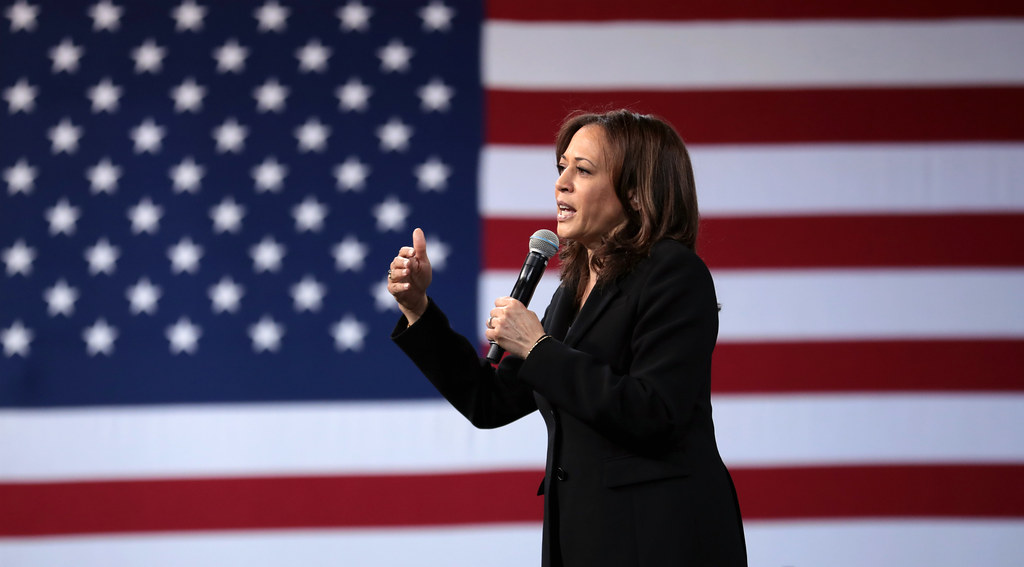
7. **The Trajectory of Her 2020 Presidential Primary Campaign**Kamala Harris’s aspiration for the 2020 Democratic presidential nomination began with considerable momentum, positioning her early on as a top contender and potential front-runner. Her official announcement in January 2019 was met with robust support, exemplified by her tying Bernie Sanders’s record for the most donations raised within 24 hours of a campaign launch. A significant turnout of over 20,000 supporters at her hometown campaign event in Oakland, California, further underscored the initial enthusiasm for her candidacy, suggesting a promising path ahead.
However, the campaign soon encountered formidable challenges, particularly under the intense scrutiny of the primary debates. During the first Democratic presidential debate in June 2019, Harris notably confronted former Vice President Joe Biden over his remarks regarding senators who had opposed integration efforts and mandatory school busing in the 1970s. This forceful exchange garnered her significant media attention and led to a temporary increase in her poll numbers, demonstrating her capacity for direct engagement on pressing social issues.
Yet, this positive shift proved fleeting. The second debate in August brought renewed pressure, as both Biden and Representative Tulsi Gabbard critically challenged Harris on her record as California’s Attorney General. Accusations, including one related to blocking DNA testing of a death row inmate, though some were assessed by the *San Jose Mercury News* as not withstanding scrutiny, served to erode her public image. This period marked a turning point, as her support in national polls began to decline precipitously, settling into the low single digits over the subsequent months.
Persistent criticism from criminal justice reformers also continued to shadow her campaign. Her past policy decisions, such as defending California’s death penalty in court in 2014, became recurring points of contention. These issues compounded the challenges she faced in reconciling her prosecutorial record with her progressive reformist platform, creating a persistent vulnerability that impacted voter perception and media narratives throughout the primary.
Ultimately, these cumulative challenges, particularly a shortage of campaign funds, led to her withdrawal from the 2020 presidential election on December 3, 2019, before the primaries commenced. This decision marked a significant setback for her presidential ambitions, concluding an earnest but ultimately unsuccessful bid for the Democratic nomination, though she later endorsed Joe Biden in March 2020.
Read more about: Maurice Tempelsman: A Diamond Baron’s Life of Power, Love, and Enduring Influence — From Refugee to Jackie Onassis’s Partner
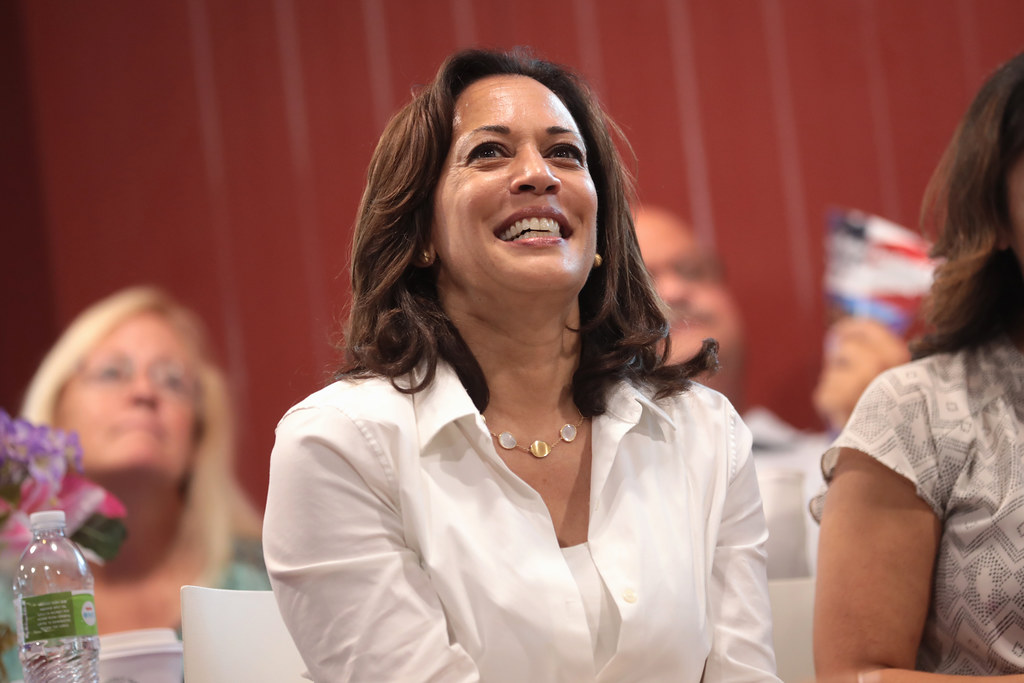
8. **Navigating the Complexities of the “Border Czar” Designation**Upon assuming the Vice Presidency, Kamala Harris was tasked by President Joe Biden on March 24, 2021, with a critical and complex assignment: to collaborate with Mexico and the Northern Triangle nations—El Salvador, Guatemala, and Honduras—to address irregular migration to the U.S.-Mexico border. Her mandate specifically focused on understanding and ameliorating the “root causes” of this migration, leading to the development of the Root Causes Strategy (RCS).
Despite the defined scope of her role, multiple news organizations and political commentators swiftly began to describe Vice President Harris as a “border czar.” This informal title, while widely disseminated, was one that Harris herself explicitly rejected, asserting that she never actually held such a designation. The nomenclature, however, quickly became ingrained in public discourse, particularly by Republican critics.
This designation, regardless of its accuracy, evolved into a significant political challenge. Republicans, among others, capitalized on the “border czar” label to directly link Harris to the evolving Mexico-United States border crisis. This framing persisted despite her having no direct authority or operational control over the physical border itself, diverting attention from her actual brief regarding diplomatic engagement and addressing underlying migratory factors.
During her inaugural international trip as Vice President in June 2021, which included visits to Guatemala and Mexico, Harris sought to underscore the administration’s stance on irregular migration. In a joint press conference with Guatemalan President Alejandro Giammattei, she issued a direct appeal to potential migrants, stating, “I want to be clear to folks in the region who are thinking about making that dangerous trek to the United States-Mexico border: Do not come. Do not come.” This statement, while intended to deter dangerous crossings, drew its own set of criticisms regarding its tone and potential impact.
Despite the political controversies surrounding her role, Harris’s efforts in Central America under the Root Causes Strategy led to concrete initiatives. These included the establishment of task forces focused on corruption and human trafficking, the creation of the Partnership for Central America, and the launch of the women’s empowerment program, ‘Her Hands.’ Additionally, investment funds were directed towards housing and businesses in the region. However, the persistent political “blow” of the “border czar” label continued to shape perceptions of her immigration policy work, illustrating the enduring impact of political narratives.
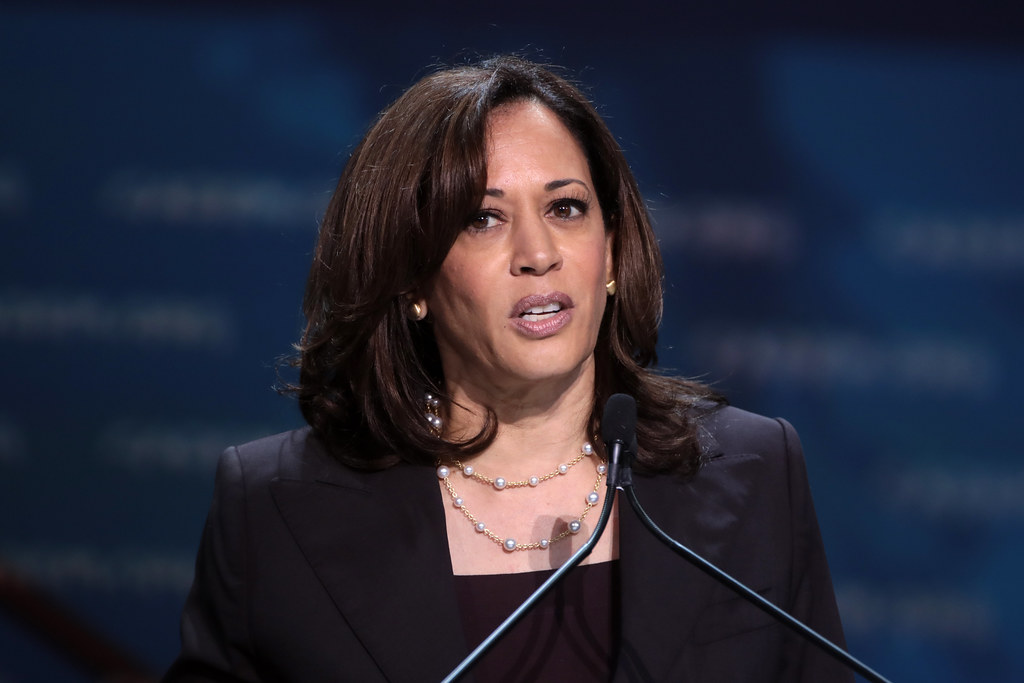
9. **Persistent Scrutiny of Her Criminal Justice Record on the National Stage**Kamala Harris’s extensive career as a prosecutor—first as San Francisco’s District Attorney and later as California’s Attorney General—has consistently remained a focal point of public scrutiny, particularly as she ascended to national political office. While her administration undertook initiatives aimed at criminal justice reform, such as launching the Division of Recidivism Reduction and Re-Entry and implementing programs like ‘Back on Track LA,’ her record also contains instances that drew considerable criticism from reform advocates.
Specifically, her office faced opposition for its stance in defending the state’s position in appeals related to wrongful convictions rather than actively pursuing exonerations or re-examinations. This approach, while often standard legal practice for a state attorney general, was perceived by some as prioritizing institutional defense over individual justice. Similarly, her office’s position on controversial prison labor practices also drew fire from activists who viewed them as exploitative, creating a significant tension with her stated commitment to progressive reform.
These criticisms gained renewed prominence during her 2020 presidential campaign, particularly after the second Democratic debate where her past actions as Attorney General were directly challenged by opponents like Joe Biden and Tulsi Gabbard. Specific accusations, such as blocking DNA testing for a death row inmate, though some were later assessed as not fully substantiated, served to underscore the vulnerability of her record to scrutiny on the national stage. These moments highlighted the formidable task of reconciling a long prosecutorial career with an image as a progressive reformer.
The persistent examination of her criminal justice record became a recurring “blow” to her public image, forcing her to repeatedly explain the nuances of her past decisions. This political dilemma—balancing the institutional obligations of upholding state law with personal progressive principles—continued to be a point of contention that shaped her narrative and prompted ongoing debate about the practicalities of reform within a vast legal system. Her tenure illustrated the intense scrutiny and complex expectations placed upon high-level legal officials.
Read more about: Shadows of History: Unraveling 15 Serial Killers’ Twisted Paths to Infamy and the Depths of Human Darkness
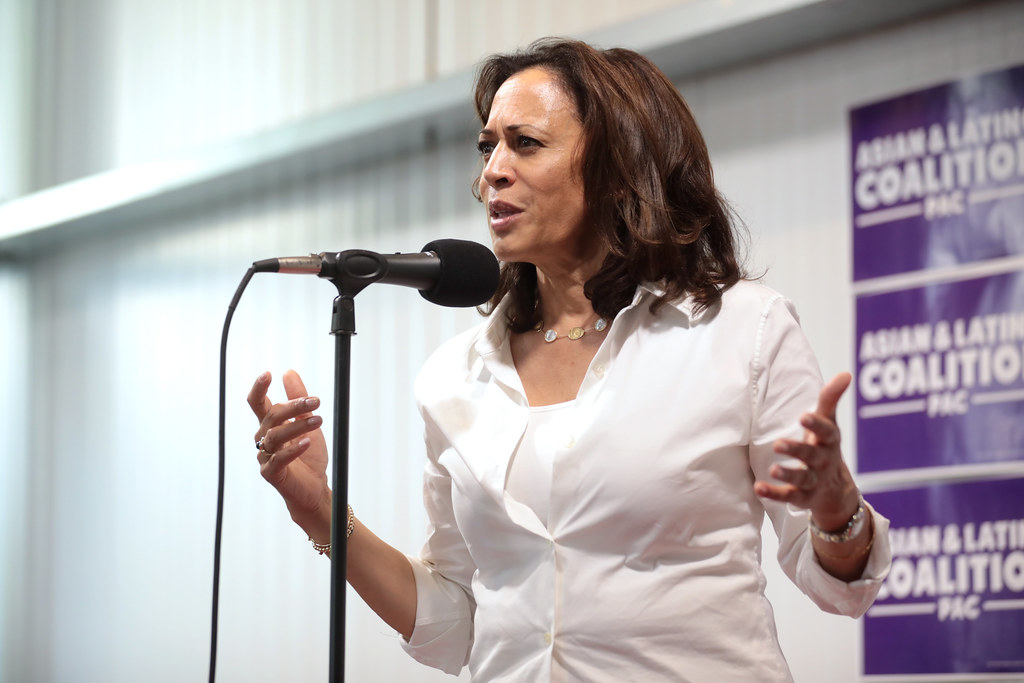
10. **The Unprecedented Burden of Senate Tie-Breaking Votes**Upon her inauguration as Vice President in January 2021, Kamala Harris assumed the constitutional role of President of the Senate, which quickly became an unexpected locus of intense political activity. The 117th Congress was evenly split, with 50 Republican and 50 Democratic senators, a division that necessitated her frequent intervention to break legislative stalemates. This created an immediate and persistent demand for her presence and political judgment in the Senate chamber.
Her first two tie-breaking votes were cast on February 5, 2021, setting a precedent for what would become an unprecedented level of involvement in Senate proceedings. Throughout her tenure, Vice President Harris cast a total of 33 tie-breaking votes, surpassing the record set by any previous Vice President, including John C. Calhoun, who cast 31 votes over nearly eight years. This remarkable figure underscored the consistent partisan gridlock and the critical nature of her role in advancing the administration’s legislative agenda.
These tie-breaking votes were instrumental in passing landmark legislation proposed by the Biden administration, most notably the American Rescue Plan Act of 2021 and the Inflation Reduction Act. In both instances, not a single Republican senator supported the measures, making Harris’s vote essential for their passage. Her consistent involvement in these high-stakes legislative battles highlighted her pivotal, though often politically contentious, position in a deeply divided Senate.
Beyond the mere act of voting, this unprecedented volume of tie-breaking decisions represented a significant and ongoing political challenge. It placed her at the very center of contentious partisan debates, requiring constant engagement and negotiation in a legislative body marked by stark ideological divisions. This constant need for her intervention symbolized the formidable “blow” of persistent political gridlock, transforming a largely ceremonial role into one of demanding legislative leadership and strategic importance.

11. **The Ultimate Electoral Challenge: The 2024 Presidential Election Loss**After President Joe Biden’s decision to withdraw his candidacy from the 2024 presidential election in July 2024, Kamala Harris launched her own presidential campaign with his endorsement, marking the culmination of her political ambitions to date. She subsequently secured the Democratic Party’s nomination, making history as the party’s standard-bearer, and selected Minnesota Governor Tim Walz as her running mate, forming a national ticket aimed at securing the White House.
Her campaign unfolded against a backdrop of complex national and international issues, and persistent scrutiny regarding her own political trajectory and past record. As the incumbent Vice President and a trailblazing figure in American politics, the election represented the ultimate test of her ability to lead a national ticket and rally a broad coalition of voters. The campaign traversed the country, engaging in debates and rallies that intensified the national political discourse.
However, the outcome of the 2024 presidential election proved to be a significant political setback. Despite her historic nomination and extensive campaigning, Kamala Harris ultimately lost the election to the Republican nominees, former President Donald Trump and Ohio Senator JD Vance. This defeat marked a profound “blow” to her presidential aspirations, ending a journey that had seen her ascend from local prosecutor to Vice President, but ultimately fall short of the nation’s highest office.
This electoral outcome will undoubtedly shape her national profile and legacy, defining a moment where, despite her numerous historic achievements and pioneering roles, she faced a decisive electoral challenge at the pinnacle of American politics. The loss underscored the formidable nature of presidential campaigns and the enduring volatility of the American electorate, leaving an indelible mark on her distinguished career.
Kamala Harris’s journey through the echelons of American governance has been characterized by both historic firsts and a series of profound political and personal challenges. From the exacting demands of her prosecutorial roles to the rigorous scrutiny of Senate hearings and the high-stakes complexities of presidential campaigns, her career has navigated the turbulent currents of public service. Each “blow”—whether a contentious policy decision, a bruising political confrontation, or the ultimate electoral setback—has contributed to a narrative of resilience and determination, illustrating the immense pressures and unyielding expectations that accompany a career at the forefront of national leadership.



